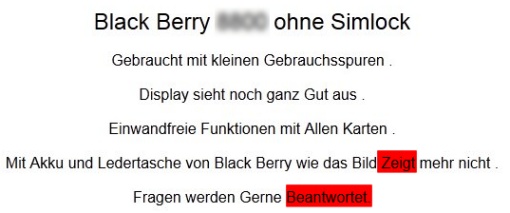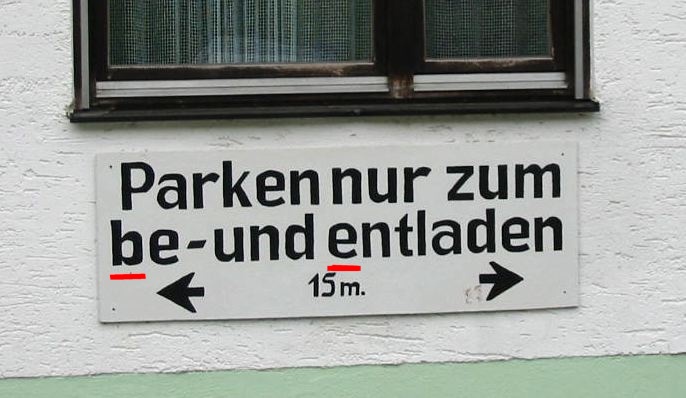

http://www.deutschseite.de
by ![]() Cathy & Tom
Cathy & Tom
last updated:
|
|
|
http://www.deutschseite.de |
|
| |||
German spelling |
upper and lower case
summary
| upper case | lower case |
| rule G01: Beginning of a sentence |
rule G04: Adjectives |
| rule G01: Write the beginning of a sentence with a capital letter. |
example(s)
hint(s)
It's an easy rule. After a dot, a new sentence begins.
Always put a capital at the beginning of a sentence.
| rule G02: Names and proper names always start with a capital letter. |
example(s)
hint(s)
about example 1:
Names of people, animals, places and so on start with a capital letter.
about example 2:
Names start with a capital letter, even though if parts of the name are adjectives, you usually write in small letters.
Further examles for proper names are:
about example 3:
Proper names start with a capital letter, even though if parts of the proper name are adjectives, you usually write in small letters.
Further examples for proper names are:
| rule G03: Nouns always start with a capital letter. |
example(s)
hint(s)
Nouns are all things you can touch.
Typical endings of nouns are:
Nouns are words which have a definite article (der, die, das) or an indefinite article (ein, eine, ...).
Nouns can occur as subject or as object.
| rule G04: Write adjectives in small letters. |
example(s)

hint(s)
An adjective is a word which describes a noun. It shows how something or somebody is (nice, fast, blue ...).
exception(s)
-> see next rule
| rule G05 : Adjectives with an article or "quantity-adjectives" start with a capital letter. |
example(s)
hint(s)
If an adjective starts with a capital letter we speak about the so-called "Substantivierung" (nominalisations).
The easiest way to recognize a noun are the articles (der|die|das).
Sometimes the preposition (e.g. bei) and article are joined together: in+das = ins.
Er hat ins Schwarze getroffen. (He hit the bull's eye.) In this case you can't recognize the article easily.
Besides articles you can recognize nominalisations with the help of words like viel, wenig, alles, etwas, nichts (adjectives, that describe quantities):
| rule G06: If a word consists of a noun+adjective write the word in small letters. |
example(s)


hint(s)
Sometimes, you have adjectives consisting of a noun and an adjective. Together, they form a new adjective and are written small.
If necessary, there might be an s in between to join them.
In the 3rd example Menschen is the noun (everything you can do). Leer is an adjective (=how is something?).
| rule G07: Write verbs in small letters. |
example(s)

hint(s)
Zeigen, beantworten, laufen and so on are all verbs (=everything you can touch) => small letters
exception(s)
-> see next rule
| rule G08: Verbs that follow an article start with a capital letter. |
example(s)

hint(s)
If a verb starts with capital letter we speak about the so-called "Substantivierung" (nominalisations).
The easiest way to recognize it are the articles (der|die|das).
Sometimes the preposition (e.g. bei) and article are joined together: bei+dem = beim.
Viel Spaß beim Bieten. (Happy bidding!) In this case you can't recognize the article easily.
Another example is: von + dem = vom. Vom Lesen bekomme ich Kopfschmerzen (I get a headache reading the book.).
exercises |
| |||||
| |||||
summary - documents for your folder |
upper and lower case (theory, 4 pages) |
| ||